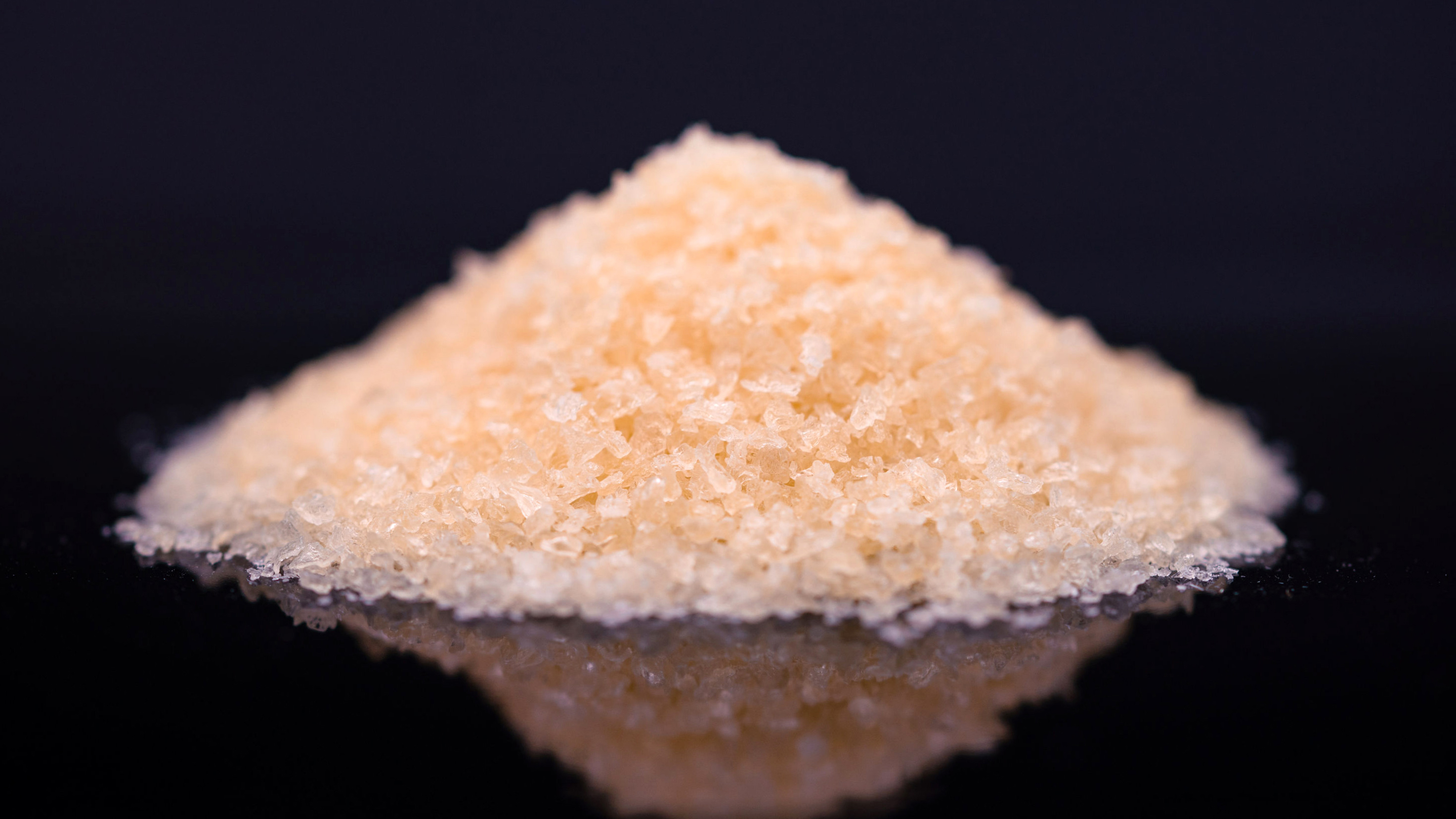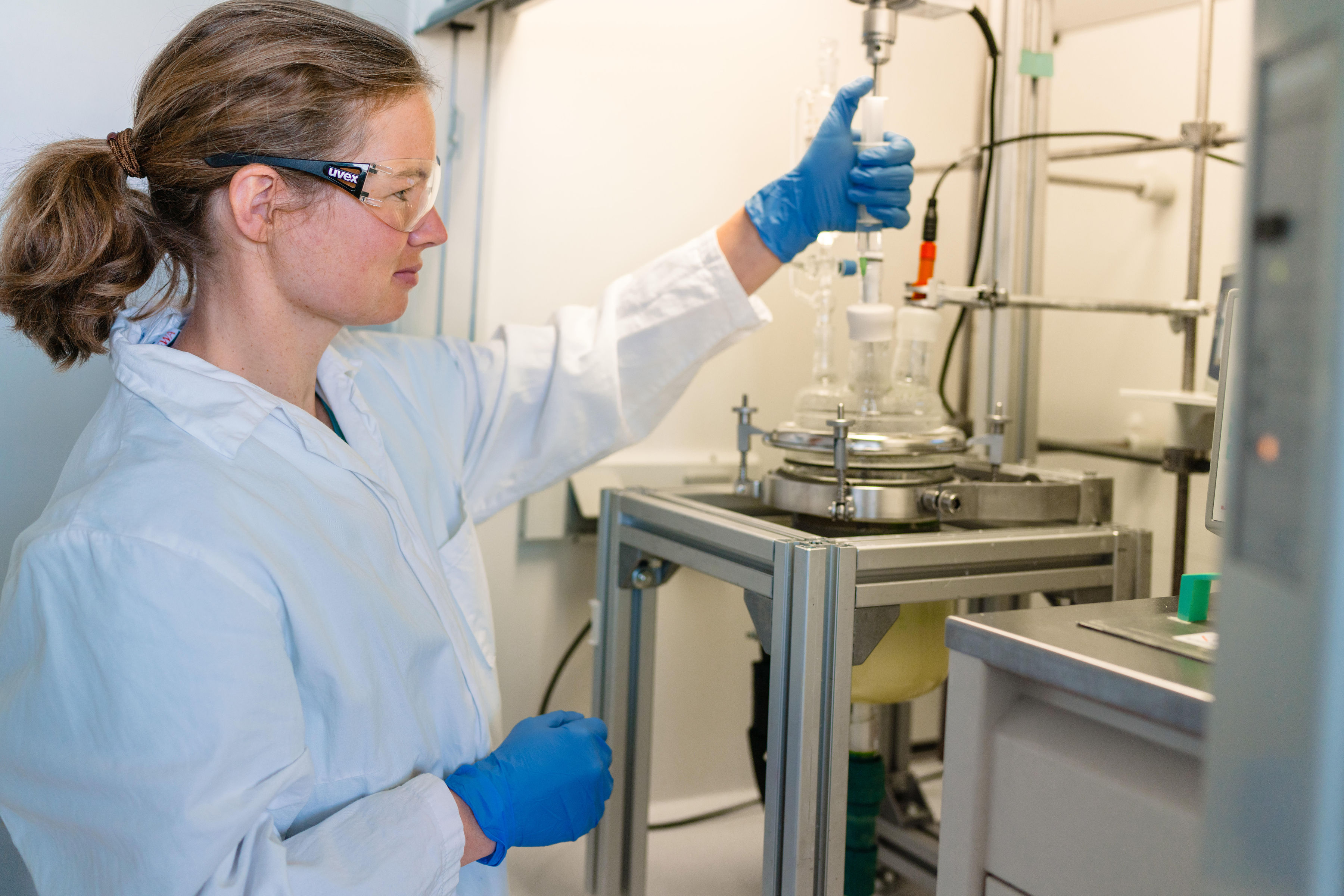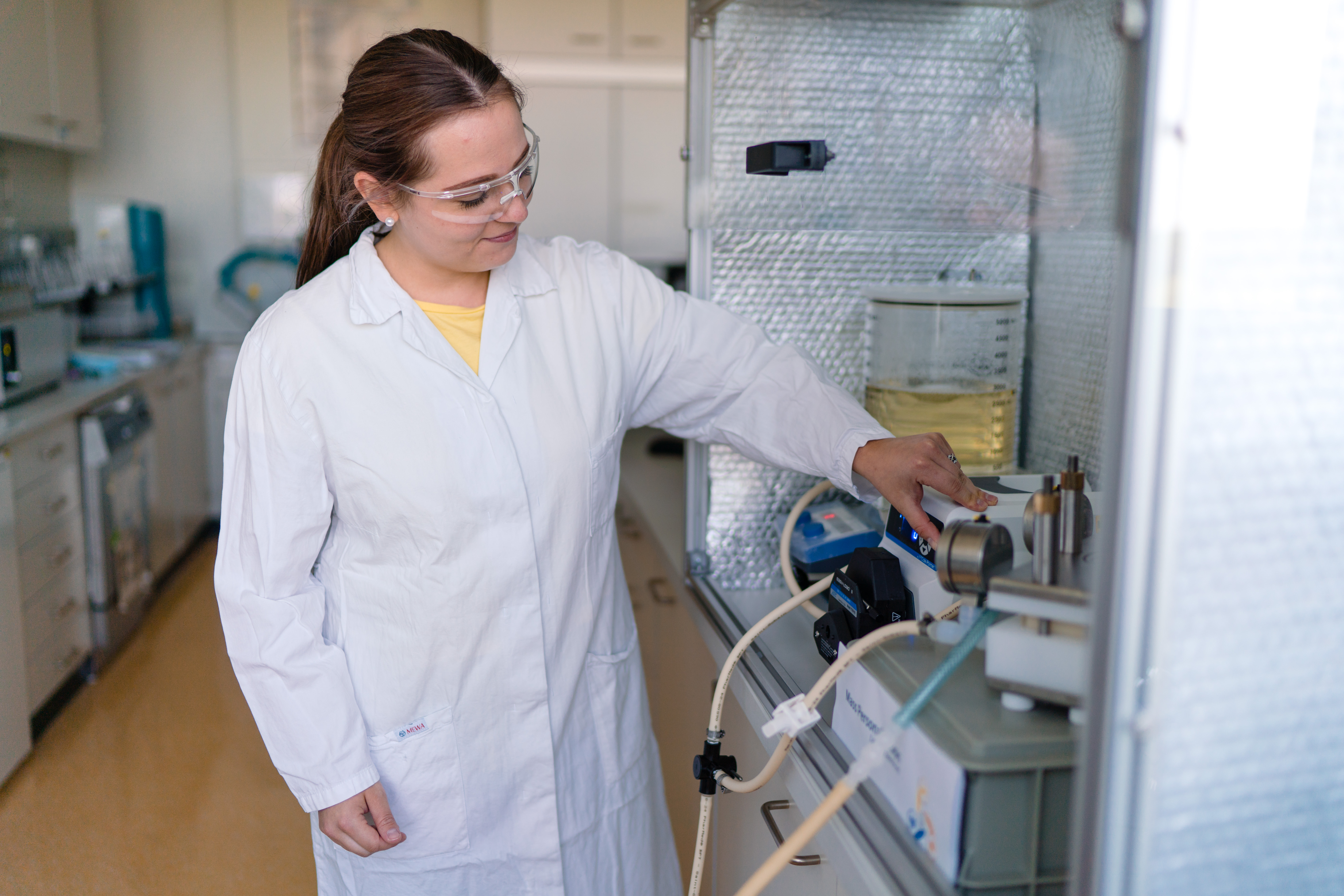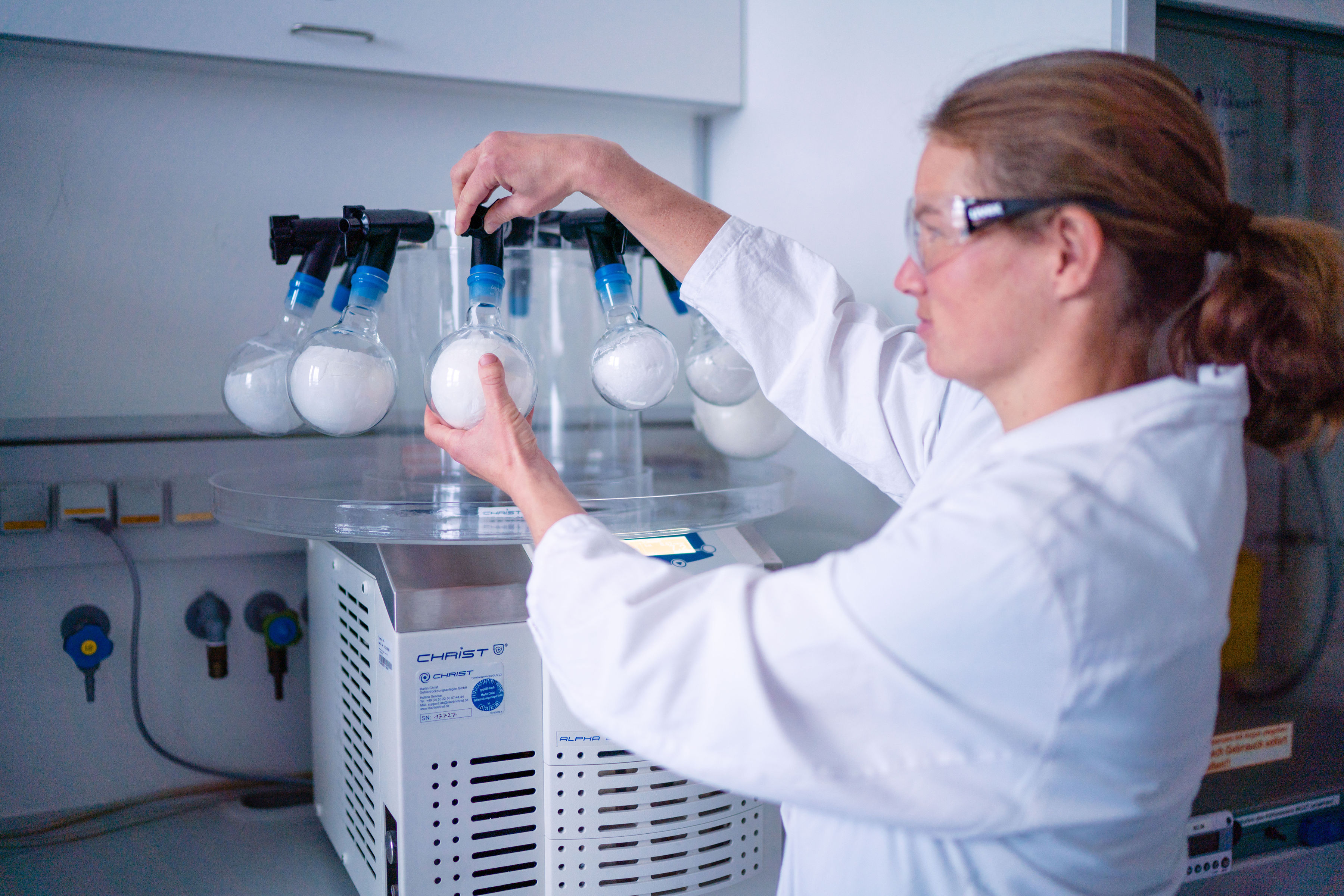By means of chemical modification, we specifically customize biopolymers such as gelatine, chitosan or inulin to suit different requirements depending on the area of application. By introducing a wide range of chemical groups, we can thus modify, for example, the viscosity, solubility or charge of the biopolymer in a targeted manner, enabling processes to be tailored more sustainably and efficiently.
Modified Biopolymers
Application-specific modification of biopolymers for coatings, encapsulation and 3D printing
By introducing crosslinkable or hydrophobic groups we create more stable and insoluble systems, for example for drug delivery applications (encapsulation of active ingredients with modified inulin) or for functional coatings (water-repellent layers on textiles with modified chitosan).
The modification of biopolymers is also of interest for printing or 3D printing processes, as this enables, among other things, the viscosity to be adjusted independently of temperature.
Adjustment of parameters for variable modification degree
In order to achieve optimal conversion and variable degrees of modification of the biopolymers, various parameters can be adjusted as required during modification, such as the temperature, the pH by using a buffer or a titrator, or the dosage of the reagents. Furthermore, we use the possibility of modification under inert gas or vacuum (for oxygen-sensitive reagents) or also under UV exclusion (for light-sensitive reagents).
Biopolymers being used
- Gelatine
- Chitosan
- Inulin
- Hyaluronic acid
- Chondroitin sulfate
Purification of modified biopolymers
Various purification methods, such as dialysis or tangential flow filtration, further assure rapid elimination of unwanted substances in the product.
Low-temperature drying processes such as freeze-drying or spray-drying ensure gentle drying of the modified biopolymers and enable the product to be obtained in various forms, e.g. as a powder.
Modification on a milligram to gram scale
The modifications can be carried out in different scales, from a few milligrams up to 100 grams, depending on the biopolymer.
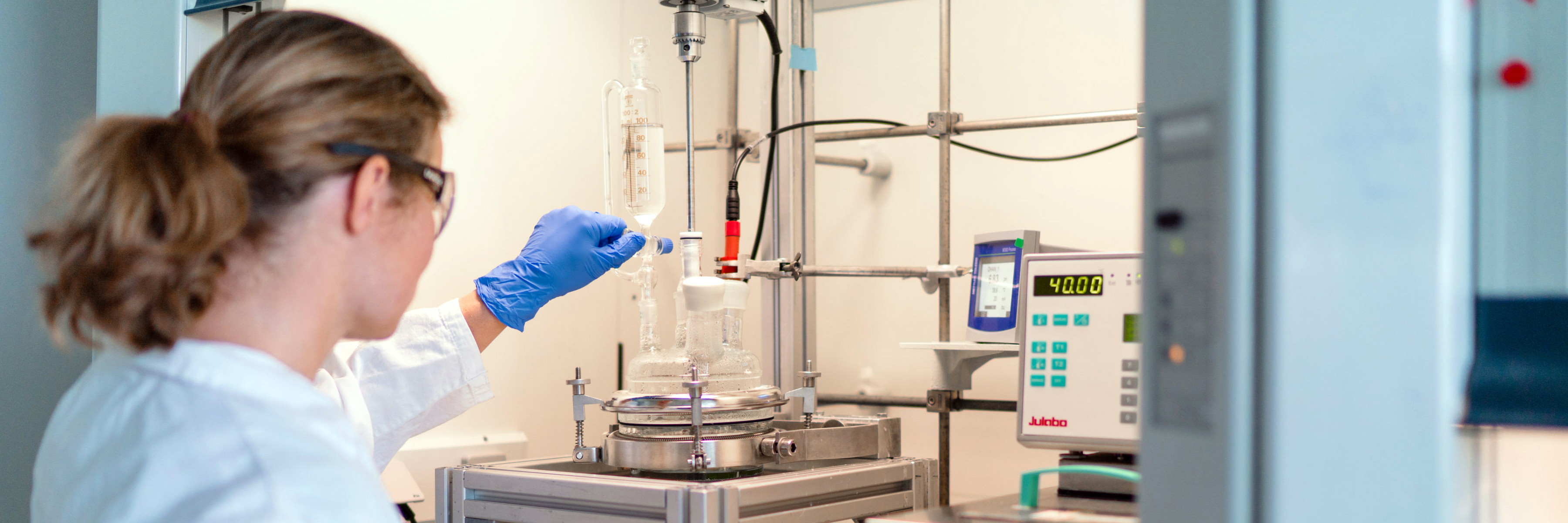
Applications and uses of modified biopolymers
Drug delivery and encapsulation
By attaching crosslinkable or hydrophobic groups, more stable and insoluble systems can be created, among other things. For example, modified inulin can be used in drug delivery systems for the encapsulation of active ingredients, or modified chitosan can be used in the production of functional water-repellent layers on textiles.
3D printing processes
The modification of biopolymers is also of interest for printing and 3D printing processes, as it allows, among other things, the viscosity to be adjusted independently of temperature.
Overview on application areas
- Active ingredient release
- Encapsulation of active ingredients
- Coatings for medical devices
- Coatings for textiles
- Inks and formulations for bioprinting
- Biosensorics
- Diagnostics
- Beauty and cosmetics
 Fraunhofer Institute for Interfacial Engineering and Biotechnology IGB
Fraunhofer Institute for Interfacial Engineering and Biotechnology IGB